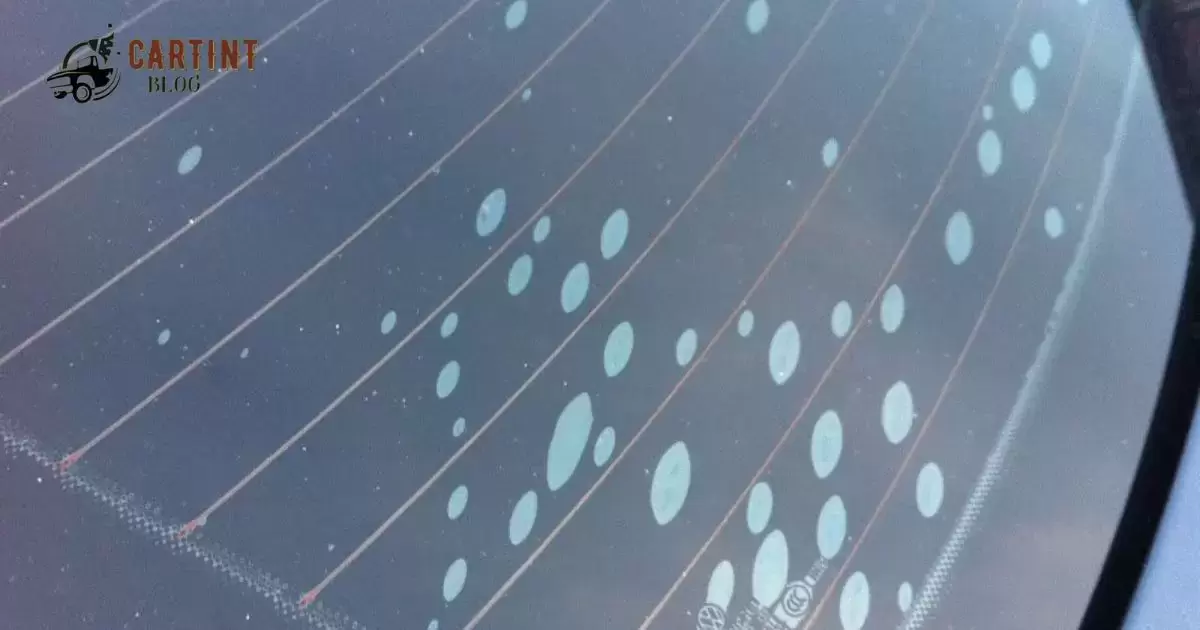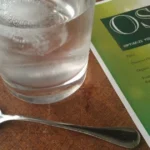That feeling when you get your car windows tinted only to see tiny annoying bubbles under the film is all too common. While unsightly, most experts agree some bubbling is normal at first. But why do bubbles appear and should you worry? Getting to the root cause helps assess next steps.
In the window tint world are you curious about Is It Normal To Have Bubbles After Window Tinting? Not all bubbles are equal. Harmless water bubbles from moisture or soap residue tend to fully dissipate over days or weeks on their own. More stubborn blistering bubbles that slowly spread out over time often indicate serious issues – usually poor installation or low quality film. Telling the difference early is key.
While a few transient bubbles can be an expected part of the curing process with reputable tint shops, excessive bubbling or bubbles that worsen signal bigger problems. Identifying the type of bubbles and acting quickly to address root causes will ensure your window tint looks flawless for the long run.
Can You Use Ac After Tinting Windows
Using air conditioning right after getting car windows tinted is generally fine. The AC cools glass and helps new film cure evenly. But take care with very cold air. Drastic temperature shifts cause issues.
Why Bubbles Form Under Window Tint
Multiple factors can cause bubbles to appear under tint film:
- Trapped moisture – Soap, water or cleaning residue bubbles evaporate
- Improper application – Uneven adhesion leads to air gaps
- Low quality film – Cheap tints more prone to bubbling
- Excess heat – High temps during or after installation cause bubbles over time
In most cases, bubbles relate to moisture or improper installation rather than film defects. But determining the underlying cause is crucial.
Not All Bubbles Are Equal
Transient Bubbles
Some temporary bubbling from moisture or soap is normal during the window tint curing process. These transient bubbles fully dissipate on their own within days or weeks as the film adhesive sets. They pose no long-term issues.
Spreading Blisters
However, spreading blister bubbles that slowly grow wider under tint over time signal serious problems. They indicate poor application, low-grade film or excess heat damage. Identifying them early is key.
Is It Normal to Have Some Bubbles After Tinting?
Seeing a few transient moisture bubbles initially is common, though still frustrating. As long as these tiny bubbles fully smooth out within a week or two, they are not concerning. Reputable tint shops expect some harmless bubbling during proper installations.
However, excessive bubbling or spreading blisters that worsen point to defects requiring redo work. So while a few temporary bubbles can be normal, too many bubbles or ones that persist signal issues.
Window Tint Bubbles After Years
Seeing bubbles appear under old window tint years after installation seems odd. But heat and sunlight degrade film adhesives over time. This allows air and moisture to slowly seep in, creating delayed bubbling.
While shops promise 5-15 year tint lifespans, most last 5-7 years max. Sun-facing films fare worse. Catching bubbling issues early allows redo work under warranty periods.
Here is a table showing expected window tint lifespan by location before bubbling risks increase:
| Window | Expected Tint Lifespan |
| Front Windshield | 5-7 years |
| Side Windows | 5-10 years |
| Rear Window | 7-15 years |
So in summary, seeing some bubbling under years-old window tint is not unheard of. But getting quality reapplications done promptly helps.
Preventing Bubbles When Installing Tint
Shops aiming for flawless bubble-free tint jobs should:
- Thoroughly clean windows
- Use controlled heat during application
- Slowly apply film to prevent air pockets
- Use high-quality tint materials
Careful installation combined with inspecting for bubble issues right away helps achieve perfect results.
Why Do Bubbles Matter for Window Tint Appearance?
Aside from being an eyesore, bubbles under window tint can:
- Spread over time leading to even worse visual issues
- Allow dirt, debris and moisture underneath film
- Cause tint liner to separate from glass
- Lead to peeling, distorted appearance
- Require premature replacement
So while some temporary bubbling is expected with reputable installers, excessive or spreading bubbles signal problems needing quick action.
How to Remove Bubbles From Under Window Tint
If bothersome bubbles do occur under freshly installed window tint, start by identifying the type:
Transient Bubbles
- Should fully smooth out on their own within days if caused by moisture
- Can speed evaporation by parking in sunlight
Spreading Blister Bubbles
- Indicate film defects and require redo work
- Must be addressed quickly to prevent worsening
For spreading bubbles or bubbles persisting beyond 2 weeks, contact the original tint installer immediately about redo work under warranty. DIY removal risks damaging film.
How Long Until Bubbles In Tint Go Away
Most harmless moisture bubbles under new window tint fade within 1-2 weeks as film cures. Parking in direct sun speeds evaporation. But tiny transient bubbles can linger longer in cold climates or seasons. A month is the max for these to smooth out.
Spreading blister bubbles worsening over time never disappear on their own. They indicate a botched install or cheap film defects. Left alone, these bubbles grow. Redo work is the only fix. Catching spreading issues early while under warranty saves money. Being patient with harmless bubbles pays off. But worsening ones need quick action.
Can You Pop Bubbles Under Tint?
No, never pop bubbles under window tint. Piercing protective film risks:
- Scratching or tearing tint
- Allowing debris and dirt underneath
- Causing leaks or condensation issues
- Potentially voiding warranties
Bubble removal requires carefully lifting and reapplying tint in problem areas. Popping bubbles makes problems worse.
How to Prevent Bubbles When Getting Windows Tinted
Customers can proactively prevent bubbles by:
- Choosing reputable tint shops with flawless past work
- Asking about their bubble prevention procedures
- Inspecting right away and pointing out any bubbles
- Acting quickly if bubbles worsen or spread over time
Carefully vetting installers plus close inspection helps achieve beautifully bubble-free window tint.
Signs of Poor Quality Tint Prone to Bubbling
Lower grade tint film carries higher bubbling risks. Signs of questionable quality tint include:
- Very low cost quotes compared to other shops
- Limited or no warranties on materials or work
- Vague answers on tint brand and specs
- Evidence of past bubbling complaints
Saving money on tinting risks headaches from bubbles, distortion and premature peeling.
How Long Should Window Tint Bubbles Last?
- Transient bubbles – Harmless moisture bubbles smooth out within 1-2 weeks as film cures
- Spreading blisters – Signal defects; should never slowly grow wider over time
Blistering bubbles worsening beyond 2 weeks mean installation issues needing immediate action.
The Causes Behind Annoying Spreading Tint Bubbles
The most common causes of more serious spreading bubbles under window tint include:
Poor Installation
- Failed to properly prep glass
- Didn’t apply film correctly
- Trapped air pockets during application
- Rushed job
Low Quality Film
- Cheaper no-name tint prone to adhesion issues
- Film too stiff to set evenly
- Not using recommended film for glass type
Excess Heat Exposure
- High outdoor temperatures right after tinting
- Hot water used when preparing windows
- Heating tools overused during installation
Understanding what is causing bubbles beneath tint helps address problems. Moisture bubbles fade, but spreading ones require proactive fixes.
At What Point Should You Redo Window Tint With Bubbles?
If bubbles under window film worsen or spread wider over two weeks, redo work is likely needed. Signs requiring redo tinting include:
- Blisters slowly bubbling out from edges
- Cloudy areas getting larger
- Distorted reflections through bubbles
- Adhesive visibly separating from glass
Contact the original tint shop immediately about warranty work for spreading bubble spots. Leaving issues too long risks damage.
Can You Fix Bubbles In Window Tint Without Redoing?
It’s tempting to try quick bubble fixes without redoing whole tint job. But attempted shortcuts likely backfire:
- Popping bubbles with sharp object – Risks tearing tint or leaking
- Poking tiny holes to bleed out air – Tint punctures worsen over time
- Pressing down on bubbles – Doesn’t address root cause
Proper fixes involve carefully lifting and reapplying film sections with blemishes. Band-aid approaches make things worse!
Is Getting Bubbles Out From Under Tint Film Difficult?
Bubble removal difficulty depends on:
- Type – Transient moisture bubbles fade on their own
- Location – Top bubbles easier than lower down
- Size – Small bubbles simpler than large blisters
- Cause – Improper install requires redoing sections
Large or spreading bubbles are trickier to smoothly remove. But identifying and addressing all bubbles promptly remains key.
Do Car Dealerships Cause More Window Tint Bubbles?
Surprisingly car dealerships using in-house tint shops present higher bubbling risks. Common dealership flaws include:
- Rushing installations between sales
- Using lower quality bulk tint materials
- Less specialized training than dedicated tint shops
- Pushing add-on services for profits over perfection
Sticking with highly reviewed dedicated local tint shops is best for flawless bubble-free results.
Why Do Some Window Tint Films Bubble More Than Others?
Cheaper aftermarket films often bubble worse than better brands designed for professional installers. Issues with lower quality tints involve:
- Weaker adhesive prone to uneven bonding
- Less flexible materials resisting stretching
- Minimal quality control and testing
Using reputable tint brands recommended by specialists avoids headaches.
Bubbles In Tint After A Week
Seeing a few tiny moisture bubbles under new tint after 1 week is often still normal. Allowing the film full curing time lets most evaporate. But numerous persisting bubbles or spreading blisters indicate problems.
It takes 10-14 days for window tint to fully cure. Bubbles remaining after 2 weeks likely need attention. Cold weather extends bubble dissipation timeframes.
Here is a table showing expected window tint bubble timelines:
| Type | When Gone | Action If Still Present |
| Tiny moisture bubbles | 1-2 weeks | May need more cure time |
| Numerous small bubbles | 2 weeks max | Sign of poor installation |
| Large/spreading blisters | Never go away | Redo tint job |
In summary, allowing 10-14 days curing time before worrying about tiny bubbles is reasonable. But excessive bubbling or spreading issues at any point signal defects needing redo work.
Should You Expect Less Bubbles From Ceramic Window Films?
Advanced nano-ceramic tints on the leading edge of tech can help reduce bubbling in some cases. Benefits over traditional dyed films include:
- Clearer adhesives avoid trapping water
- Smoother application with less friction
- Fine-tuned engineering and rigorously testing
However, cheaper ceramic pretenders offer minimal advantages. And poor installation causes bubbles regardless of film type. So while premium ceramics help, they can’t prevent improper practices.
How Do Window Tint Bubbles Affect Heat Reduction Performance?
A key benefit of quality UV-blocking window tints relates to cooling efficiency. But what about bubbles?
- Small transient moisture bubbles have minimal effects on heat reduction
- However spreading blister bubbles can lower thermal performance over time by Creating tiny air pockets
So while tiny temporary bubbles won’t hinder tint functioning, spreading ones degrade benefits until fixed.
Frequently Asked Question
Are bubbles normal when window tint dries?
Yes, small bubbles are common while the film cures.
Should I pop bubbles under new window tint?
No, allow the tint to fully cure before removing bubbles.
How long do bubbles last after tinting car windows?
Bubbles typically disappear within a few days as the film finishes curing.
Do bubbles mean the tint was installed incorrectly?
Not always – small bubbles are expected during the curing process.
Can tint bubbles lead to peeling or other issues?
If bubbles remain after full curing, moisture may be trapped, risking long term damage.
Conclusion
Seeing a few tiny moisture bubbles under new window tint is often normal as film cures. Allowing 1-2 weeks for dissipation is reasonable. But numerous, spreading or worsening bubbles indicate problems needing attention.
The key is identifying bubble causes early. Harmless ones smooth out given time. However, excessive bubbling or blisters spreading over two weeks likely require window tint redo work. Being patient at first yet promptly addressing defects ensures flawless, long-lasting tint with a perfect appearance.




